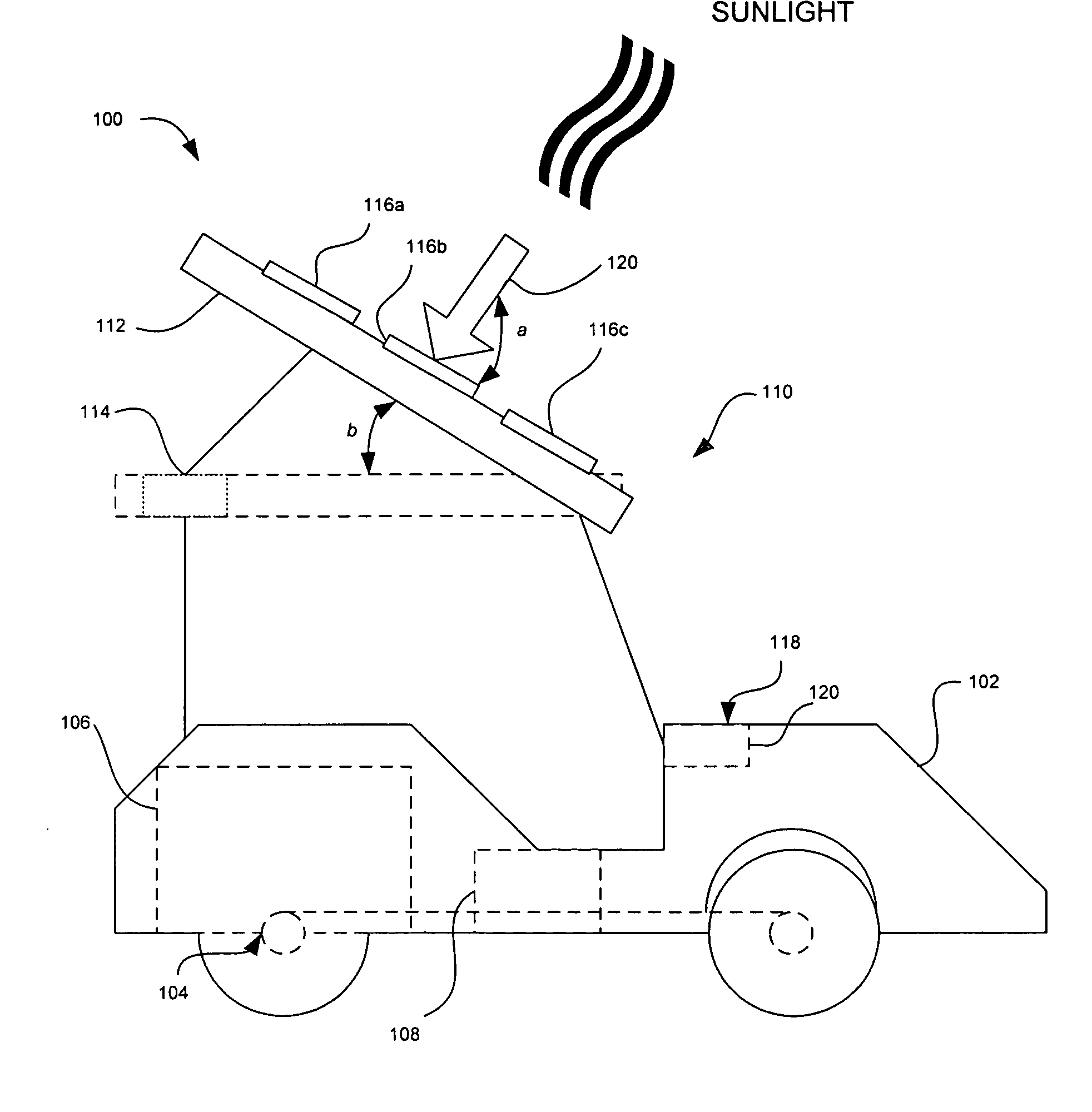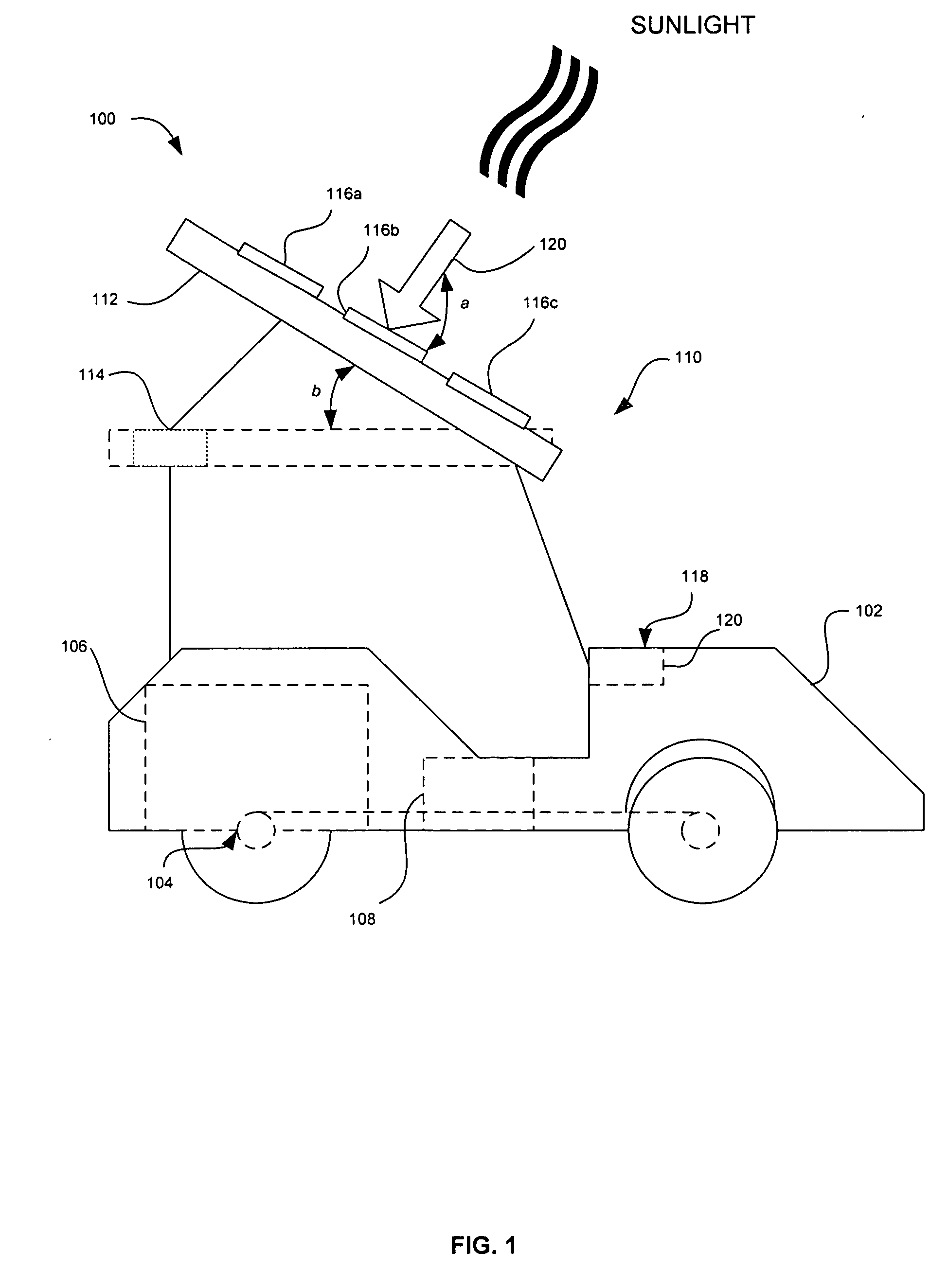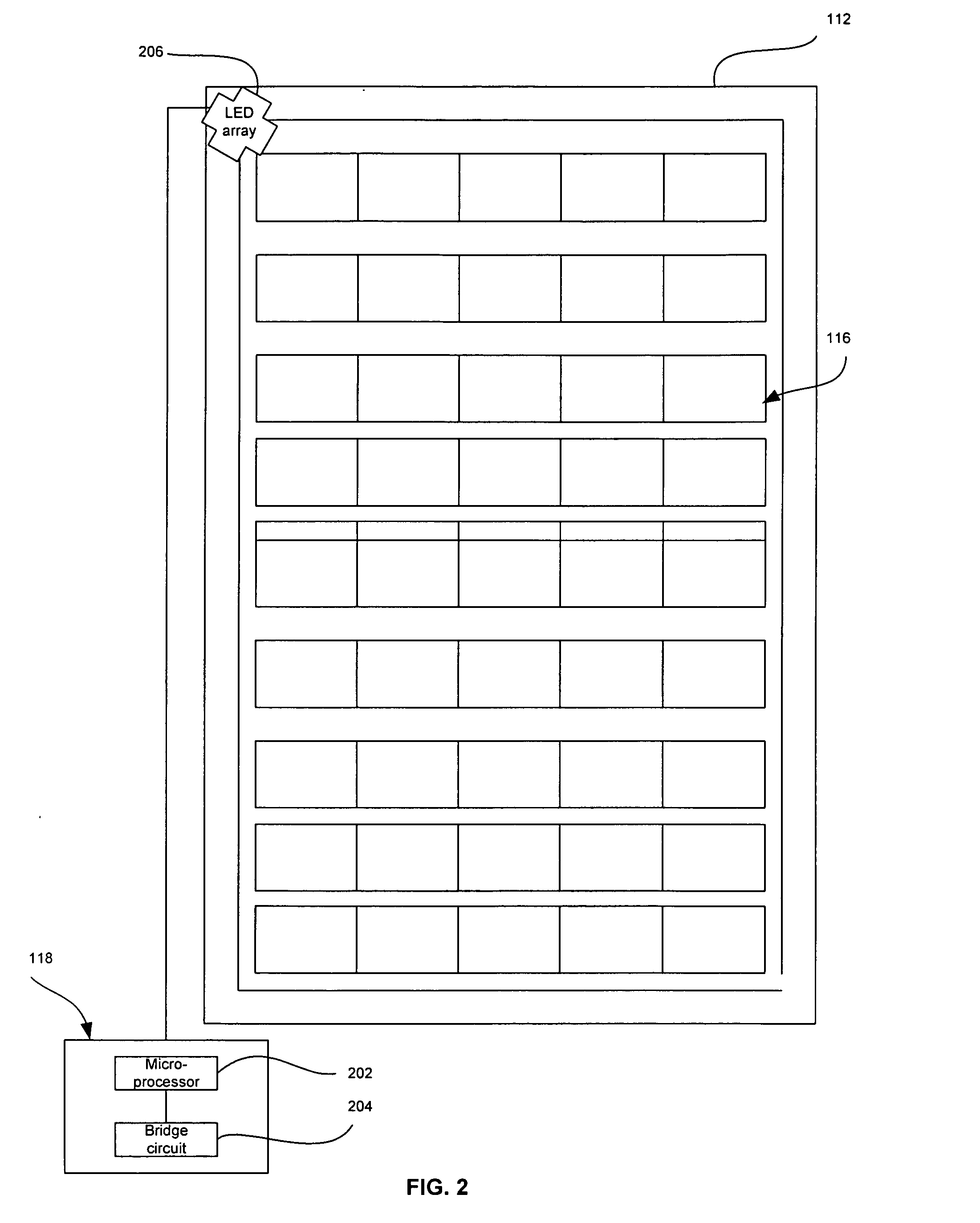Powering a vehicle and providing excess energy to an external device using photovoltaic cells
- Summary
- Abstract
- Description
- Claims
- Application Information
AI Technical Summary
Benefits of technology
Problems solved by technology
Method used
Image
Examples
Embodiment Construction
[0034]FIG. 1 is a schematic diagram of a self-propelled vehicle 100 according to one embodiment of the present invention. The vehicle 100 illustratively includes a vehicle body 102 and a vehicle propulsion mechanism 104 for propelling the vehicle body over a surface. The vehicle propulsion mechanism 104 is illustratively driven by a vehicle motor 106 carried in or mounted on the vehicle body 102. The vehicle motor 106 is illustratively powered by a battery 108, which is also carried in or mounted on the vehicle body 102. As further illustrated, the vehicle 100 includes a photovoltaic powering system 110 carried by the vehicle body 102.
[0035] The size and shape of the vehicle body 102 can vary depending on the function that the vehicle 100 performs and / or the environment in which it is used. For example, the vehicle 100 can be used to transport one or more individuals within a campus or recreational environment, such as a university campus or a golf course, in which case the vehicle...
PUM
 Login to View More
Login to View More Abstract
Description
Claims
Application Information
 Login to View More
Login to View More - R&D
- Intellectual Property
- Life Sciences
- Materials
- Tech Scout
- Unparalleled Data Quality
- Higher Quality Content
- 60% Fewer Hallucinations
Browse by: Latest US Patents, China's latest patents, Technical Efficacy Thesaurus, Application Domain, Technology Topic, Popular Technical Reports.
© 2025 PatSnap. All rights reserved.Legal|Privacy policy|Modern Slavery Act Transparency Statement|Sitemap|About US| Contact US: help@patsnap.com



